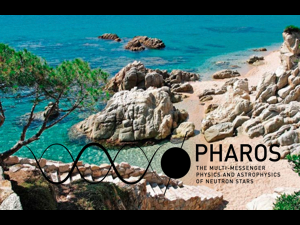Speaker
Ms
Michelle Tsirou
(LUPM - In2p3/CNRS)
Description
Pulsar wind nebulae (PWNe) are higly magnetised clouds of relativistic particles, injected and accelerated by the relativistic wind of a rapidly rotating neutron star. Observations in various wavelengths during the last decades have highlighted different nebula morphologies. In this study, we focus on the composite supernova remnant MSH 15-52 containing within its radio emitting shell a PWN. The nebula has been observed in the radio, X-ray and gamma-ray domains, where its intriguing shape underlines a strong asymmetry among the axis of the beams emerging from the central pulsar PSR B1508-59. We explore the shape of its emission in the very high energy (VHE) gamma-ray realm using observations with the High Energy Stereoscopic System (H.E.S.S.).
We compare the Inverse Compton emission in the VHE regime with the synchrotron radiation from the same lepton population as observed in X-rays. We analyse the latest H.E.S.S. data ranging from 0.3 to 30 TeV, whose morphology we model using an X-ray template and making assumptions on the magnetic field within. We find a distinct VHE component extending beyond the X-ray nebula, and examine the energy dependence of this morphology. We discuss the physical implications for the magnetic field and the density of the surrounding medium, and an interpretation of the extended component in terms of lepton transport beyond the synchrotron nebula, in order to account for the asymmetry of the PWN.
Primary author
Ms
Michelle Tsirou
(LUPM - In2p3/CNRS)
Co-authors
Dr
Emma de Oña Wilhelmi
(ICE/CSIC-IEEC)
Dr
Jacco Vink
(University of Amsterdam)
Dr
Manami Sasaki
(University of Erlangen-Nuremberg)
Dr
Roberta Zanin
(MPIK)
Dr
Régis Terrier
(APC)
Dr
Yves A. Gallant
(LUPM In2p3/CNRS)

